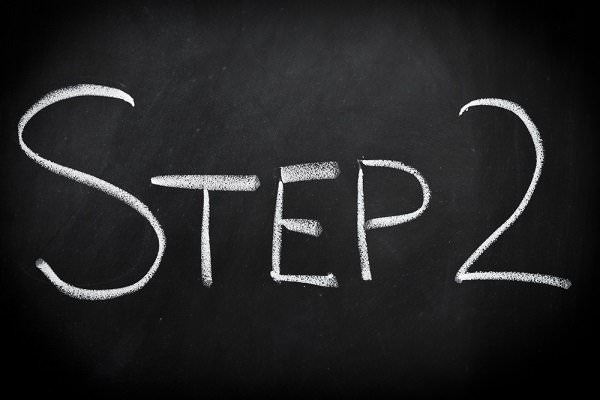Local Rehab Resources
United States Addiction Rehab, Treatment Centers, and Alcoholics Anonymous
Detox Centers
United States addiction treatment is a process, and the road to recovery can be lengthy, but attainable. There’s not one solution that works for everyone, and there’s not one sure-fire solution guaranteed to work. Instead, there are often many steps a person goes through as part of the treatment process.
The first step is often a medical detox. Detox facilities offer a safe environment with medical supervision. While drugs and alcohol leave someone’s system, they can be monitored by medical staff. This allows them to be more comfortable, and to reduce the risk of complications. A successful detox is a necessary first step before any other treatment or therapy can begin.
If someone tries to skip a medical detox and go through withdrawal on their own, the symptoms can be serious or life-threatening. For example, symptoms of alcohol withdrawal can include anxiety, depression, changes in blood pressure and seizures. Medical detox is a good way to make sure withdrawal symptoms don’t become severe. Many rehab facilities offer a detox program as part of the overall treatment plan.
Suboxone Clinics and Methadone Clinics
Many seeking heroin addiction treatment and opioid addiction treatment might be interested in local suboxone clinics or West Palm methadone clinics. These medication-assisted treatment facilities provide injections of medications that ease withdrawal symptoms, although each medication has its potential drawbacks. Methadone often becomes abused, essentially replacing one problem with a different problem. Suboxone, while offering a lower potential for abuse, may still allow for some dependence and requires a long period of use.
Suboxone clinics and methadone clinics have become more common in the United States. Suboxone and methadone are both medications approved to help treat opioid use disorder. These drugs affect the same receptors as opioids like heroin or prescription painkillers. The idea is that these medications can help someone stop using other opioids. People often visit methadone maintenance clinics and suboxone clinics throughout the U.S.
The use of Suboxone or methadone can prevent withdrawal symptoms, and while it is helpful to manage detox, there are potential pitfalls. First, the use of a drug like Suboxone or methadone should be done along with comprehensive addiction treatment. Just using the medication on its own is only creating a replacement for other opioids. There’s no recognition of the root causes of addiction.
People often become dependent and even addicted to Suboxone and methadone, and they may stay on these drugs for years. Visiting methadone clinics and Suboxone clinics can also be expensive and time-consuming.
Rather than first considering a methadone clinic or Suboxone clinic, it’s more beneficial to speak to an addiction professional. While medication may be one part of detailed and ongoing treatment and recovery plan, it shouldn’t be the only thing used.
Finding Drug and Alcohol Rehab in the United States
Alcohol Treatment Centers and Drug Rehab Centers
There are so many alcohol treatment centers, and drug rehab centers available in the U.S. Finding United States addiction treatment can be overwhelming. Knowing the basics of what’s available is a good start.
The overall goal of drug or alcohol addiction treatment is to help people stop compulsively seeking and using drugs. For many people, a short-term or one-time treatment program isn’t sufficient to treat the chronic disease that is addiction. Treatment is a long-term process, and it can require multiple treatment programs.
Inpatient Rehab Center
There are inpatient rehab programs throughout the United States. Inpatient rehab or residential treatment requires patients to live in the facility for a period of time. This can be 28 days to 90 days or longer, depending on the person and the severity of their addiction.
Inpatient treatment provides support and constant supervision. This lowers the risk of a relapse. Inpatient rehab is also very intensive, and people are more likely to participate in holistic treatments during an inpatient program.
An inpatient rehab facility may offer dual diagnosis treatment for drugs and mental health disorders (such as depression and crack addiction) and long-term aftercare planning and development of relapse prevention strategies. If someone has a co-occurring disorder, inpatient rehab is considered the best treatment option, so they do receive dual diagnosis care along with behavioral therapy. Medical care may be provided as necessary during inpatient rehab also.
Partial Hospitalization
Another United States addiction treatment option is called partial hospitalization. Partial hospitalization or day treatment combines aspects of inpatient rehab with outpatient treatment. Partial hospitalization is intensive during the day. There are many hours of therapy and other forms of treatment. Then, at the end of the day, people return home. Some patients may return to their sober living facility.
You can participate in a partial hospitalization program without first going to inpatient rehab. However, many people start with inpatient rehab, and then gradually move into a partial hospitalization program when they’re ready. A partial hospitalization program is a good way for someone to build on the strategies they learn during inpatient treatment, and experience more flexibility and freedom.
Outpatient Programs
Outpatient rehab is the third major category of United States addiction treatment options. There is a great deal of flexibility, and people can come and go as they choose when they participate in outpatient rehab.
Outpatient rehab programs can be very different from one another. For example, outpatient rehab can require a commitment of only a few hours a week, up to 10 hours or more each week.
Outpatient rehab can be a good option for someone who isn’t a long-term drug user, or who maybe has a mild addiction. If someone feels they are drinking more than they should, but it’s only been going on briefly, participation in an outpatient rehab may be effective. If someone was a prescription drug user and now has an addiction to heroin, inpatient rehab may be the right first step.
Outpatient rehab can also be another part of the overall treatment process that someone participates in following inpatient or partial hospitalization treatment.
Recovery Meetings in the United States
Addiction in America is at a crisis level. Having support and community resources is necessary during this time. Emotional support is one of the most important things a person can receive as they’re seeking treatment for addiction, or following participation in an addiction treatment program. Emotional support can come from loved ones, but it’s also beneficial to go to recovery meetings or support groups.
Alcoholics Anonymous and Narcotics Anonymous are two of the most well-known and popular recovery support groups not only in the United States but also the world. There are other options as well. It doesn’t necessarily matter what type of support group someone participates in. Rather, it’s most important to have the support. Emotional support can mean the difference between remaining drug and alcohol-free or relapsing.
Alcoholics Anonymous (AA) Meetings
Alcoholics Anonymous or AA is a longstanding international program. It was first started in 1935, and there are now AA meetings held every day around the United States and the world. AA is a spiritual Twelve Step program. The Twelve Steps are focused on remaining alcohol-free, but also on character development.
When someone participates in an AA meeting in their city or town, they can share their stories, listen to others, give and receive support. It’s a good way to promote a sense of accountability. You don’t have to go to rehab before you can participate in AA meetings, but it can be part of a strong long-term aftercare and relapse prevention plan.
Narcotics Anonymous (NA) Meetings
Narcotics Anonymous or NA is another Twelve Step program. It’s similar in most every way to AA, aside from the fact that it’s based on drug abuse rather than alcohol addiction. There are tens of thousands of NA meetings held in countries all over the world. There are countless NA meetings in the U.S in even small towns.
The only requirement to participate in an NA meeting is a desire to stop using drugs. People should aim to regularly and frequently attend NA meetings. NA meetings may take place in community centers, churches, libraries or anywhere.
Al-Anon and Nar-Anon Meetings
Addiction and its devastating effects are in no way contained to only the person using drugs or alcohol. The families of addicts often suffer and struggle in significant ways. Al-Anon and Nar-Anon were two family groups established to help people who love an addict. These are fellowship programs and support groups that have many similarities to AA and NA.
The person who struggles with drugs or alcohol doesn’t have to recognize they have a problem for their loved ones to participate in Al-Anon or Nar-Anon. The idea isn’t that Al-Anon or Nar-Anon members can learn how to help their loved one. Rather, it’s a source of support and comfort for the families and friends on a personal level.
Other Recovery Meetings
SMART Recovery Meetings
A Twelve Step program isn’t the right fit for everyone, but the need for support remains. Smart Recovery is one alternative. Smart stands for Self-Management and Recovery Training. This is a secular program based on science and cognitive-behavioral therapy.
Smart is designed to provide an opportunity for people to feel empowered and accountable for their behavior. Smart Recovery meetings are held around the U.S., and the organization also offers online meetings.
Ending Addiction
Even though there are many United States addiction treatment options available, often people still don’t seek treatment. Some of the reasons people avoid addiction treatment include the fact that they feel they aren’t ready to stop using, or they don’t know where to find help. Many people also fear a negative backlash from friends, family, or others around them if they seek treatment. None of these should be reasons that you don’t go to a United States addiction treatment facility.
The consequence of not seeking treatment can be so much worse than any apprehension you may have. It often helps people to talk with an addiction specialist to understand more about what their options are, and what to expect from addiction programs. Contact us and we can help you not only understand substance use disorders and the road to recovery, but also specifics such as insurance coverage for substance abuse treatment.
Things to consider when choosing an addiction treatment program include:
- Is the person willing to receive treatment?
- Would the person benefit from leaving their home and going out-of-state for treatment?
- Could co-occurring mental health disorders require treatment?
- How severe is the addiction?
- Have other treatment programs or options been tried previously?
- Does the person have complicating factors, such as addictions to multiple substances?
- Is the person seeking specialized care, such as faith-based treatment?
Along with connecting with the right substance abuse treatment program, it’s so important to understand the role of continuing care and support even after leaving rehab. Addiction is chronic, and continuing care and a dedication to ongoing treatment through participation in recovery programs are essential.

Don’t Go Through This Alone
You are not alone. A Pew survey showed that almost half of all adults in the U.S. have a family member or close friend who’s been addicted to drugs. There are United States addiction treatment resources available to everyone. We encourage you to contact us and learn more about the programs available and explore the ones that could be the right fit for your or your loved one. In the midst of disturbing statistics and the tens of thousands of overdose and alcohol-related deaths each year in the U.S., take the first step by contact Amethyst Recovery today at (888) 447-7724.
Medical Disclaimer
The contents of this website such as text, graphics, images, and other material contained on the website (“Content”) are for informational purposes only and do not constitute medical advice; the Content is not intended to be a substitute for professional medical advice, diagnosis, or treatment. Always seek the advice of a physician or other qualified health provider with any questions you may have regarding a medical condition. Never disregard professional medical advice or delay in seeking it because of something you have read on this website. In the event of a medical emergency, call a doctor or 911 immediately. This website does not recommend or endorse any specific tests, physicians, products, procedures, opinions, or other information that may be mentioned on the Site. Reliance on any information provided by this website is solely at your own risk.
Other Addiction Articles
Codeine Addiction: Recreational Use & Abuse Symptoms & Statistics
Understanding Codeine Codeine is a commonly used prescription drug that is given to patients experiencing moderate pain or coughs and colds. A codeine prescription can come in tablet or liquid form. Codeine is classified as a narcotic or opiate. Simply put, a narcotic...
Benzodiazepine Treatment: Inpatient, Outpatient & PHP Rehabs
Benzodiazepine Addiction Benzodiazepines are a class of drugs that include commonly prescribed substances such as Xanax and Klonopin. Benzodiazepines are different from each other regarding the specific symptoms they treat and whether they’re short-, medium-, or...
Bullying and Substance Abuse
There’s a strong link between bullying and substance abuse. Bullied victims are much more likely to abuse different types of substances than those who haven’t been bullied. Bullying can take place anywhere. It can also happen to anyone. With that said, this type of...






 Laurel McGinnis
Laurel McGinnis Brie Rodriguez
Brie Rodriguez CORI BAIZA
CORI BAIZA JOHN GAU
JOHN GAU MARK GUDIM
MARK GUDIM Jeffrey M. Bishop, D.O.
Jeffrey M. Bishop, D.O. AMANDA MARINELLI, DNP, BBA, AG NP-BC, PMHNP-BC, CARN-AP
AMANDA MARINELLI, DNP, BBA, AG NP-BC, PMHNP-BC, CARN-AP